**This chart analysis is for educational purposes only, and should not
be construed as a recommendation to buy, sell or sell-short said securities**
Stocks put in another solid performance with the Russell 2000 ETF (IWM) and the S&P MidCap 400 SPDR (MDY) gaining around 1%. All nine sectors were higher with the Industrials SPDR (XLI) and Finance SPDR (XLF) leading the way. Relative strength in finance is a positive overall, especially for the Russell 2000 ($RUT) because financial services is the biggest sector for this small-cap index. Techs continued their run with the Semiconductor SPDR (XSD) tacking on another 1.71% and the FirstTrust Internet ETF (FDN) adding 1.17%. Weakness in gold and silver weighed on the Gold Miners ETF (GDX) and the Silver Miners ETF (SIL), both of which fell over 3%. Energy-related stocks also took a breather as oil fell $3. At this point, we have short-term breakouts in SPY and IWM, which means the short-term trend is up. These breakouts were confirmed by breakouts in the S&P 1500 AD Line and AD Volume Line. SPY and IWM are, however, getting short-term overbought after 3+ percent advances in just six days. Also note that Apple investors were not impressed with the product launch because the shares fell after the event. Weakness in Apple could weigh on QQQ.
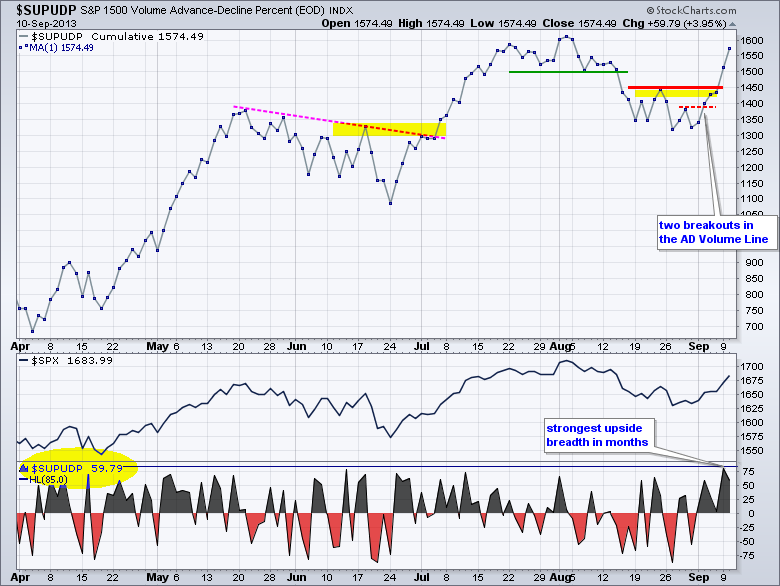
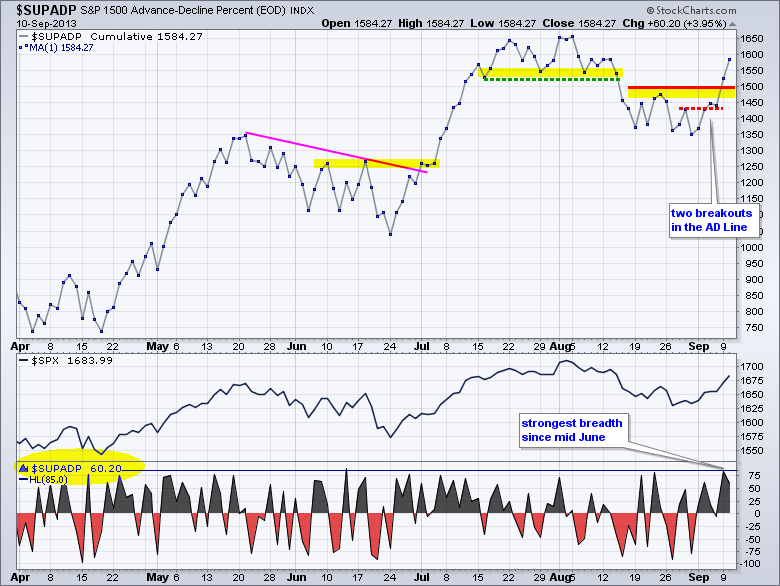
be construed as a recommendation to buy, sell or sell-short said securities**
Stocks put in another solid performance with the Russell 2000 ETF (IWM) and the S&P MidCap 400 SPDR (MDY) gaining around 1%. All nine sectors were higher with the Industrials SPDR (XLI) and Finance SPDR (XLF) leading the way. Relative strength in finance is a positive overall, especially for the Russell 2000 ($RUT) because financial services is the biggest sector for this small-cap index. Techs continued their run with the Semiconductor SPDR (XSD) tacking on another 1.71% and the FirstTrust Internet ETF (FDN) adding 1.17%. Weakness in gold and silver weighed on the Gold Miners ETF (GDX) and the Silver Miners ETF (SIL), both of which fell over 3%. Energy-related stocks also took a breather as oil fell $3. At this point, we have short-term breakouts in SPY and IWM, which means the short-term trend is up. These breakouts were confirmed by breakouts in the S&P 1500 AD Line and AD Volume Line. SPY and IWM are, however, getting short-term overbought after 3+ percent advances in just six days. Also note that Apple investors were not impressed with the product launch because the shares fell after the event. Weakness in Apple could weigh on QQQ.


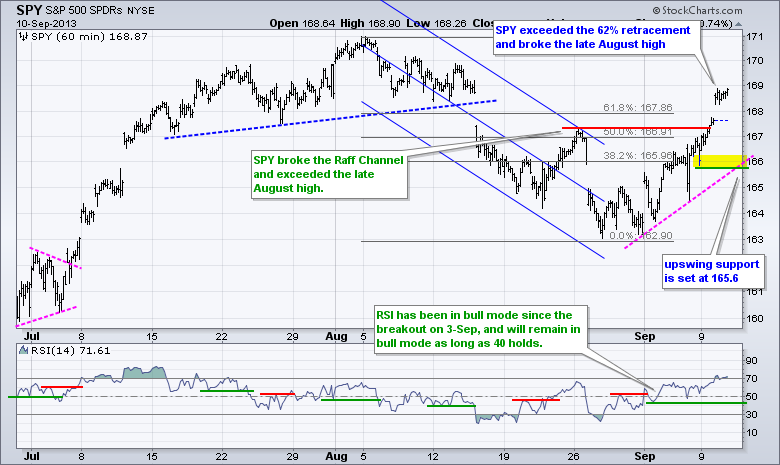
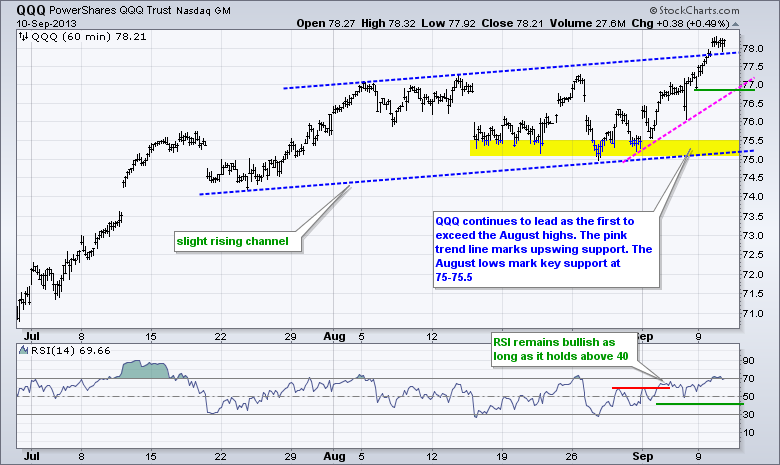

**************************************************************************

**************************************************************************
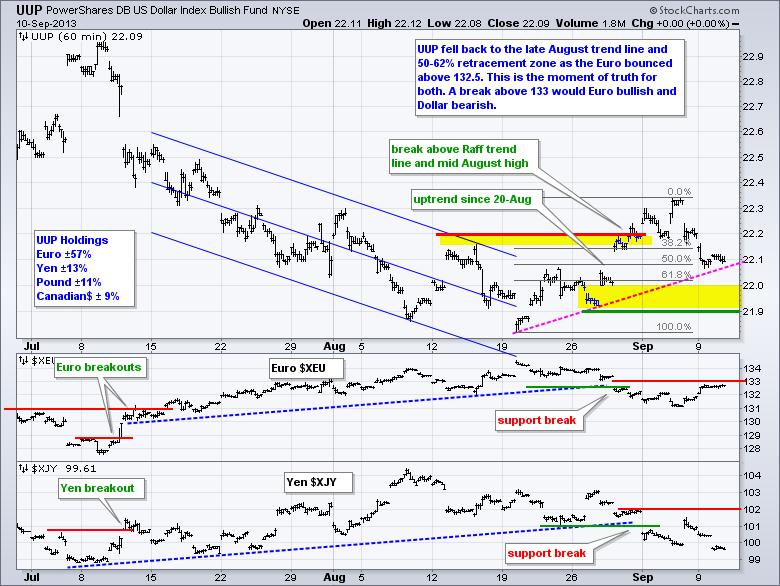
**************************************************************************
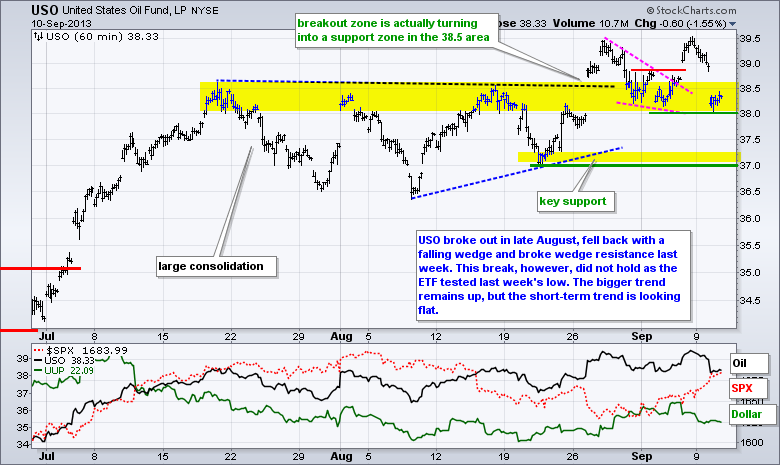
**************************************************************************
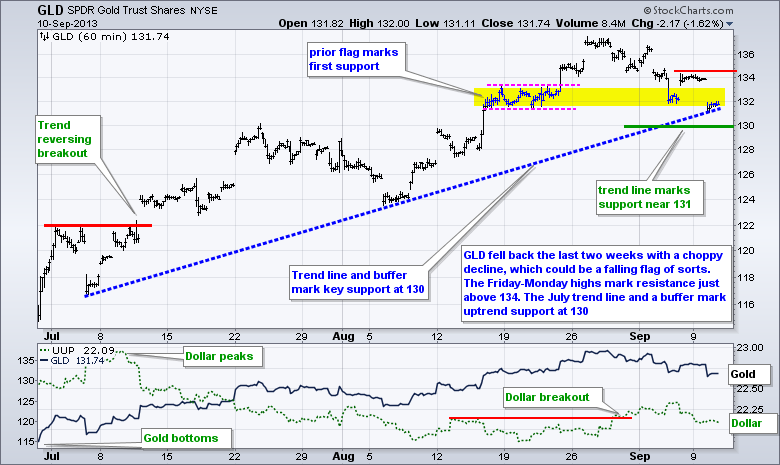
**************************************************************************
Key Reports and Events (all times Eastern):
Wed - Sep 11 - 07:00 - MBA Mortgage Index
Wed - Sep 11 - 10:30 - Crude Oil Inventories
Thu - Sep 12 - 08:30 - Initial Jobless Claims
Thu - Sep 12 - 10:30 - Natural Gas Inventories
Fri - Sep 13 - 08:30 - Retail Sales
Fri - Sep 13 - 08:30 - Producer Price Index (PPI)
Fri - Sep 13 - 09:55 - Michigan Sentiment
Tue – Sep 17 – 09:00 – FOMC Meeting Begins
Wed – Sep 18 – 14:15 – FOMC Policy Statement
Fri – Sep 06 – 08:30 – Employment Report
Sun – Sep 22 – 10:00 – German Elections
Tue – Oct 15 - 09:00 – Debt Ceiling Deadline
Charts of Interest: Tuesday and Thursday
This commentary and charts-of-interest are designed to stimulate thinking. This analysis is
not a recommendation to buy, sell, hold or sell short any security (stock ETF or otherwise).
We all need to think for ourselves when it comes to trading our own accounts. First, it is
the only way to really learn. Second, we are the only ones responsible for our decisions.
Think of these charts as food for further analysis. Before making a trade, it is important
to have a plan. Plan the trade and trade the plan. Among other things, this includes setting
a trigger level, a target area and a stop-loss level. It is also important to plan for three
possible price movements: advance, decline or sideways. Have a plan for all three scenarios
BEFORE making the trade. Consider possible holding times. And finally, look at overall market
conditions and sector/industry performance.

About the author:
Arthur Hill, CMT, is the Chief Technical Strategist at TrendInvestorPro.com. Focusing predominantly on US equities and ETFs, his systematic approach of identifying trend, finding signals within the trend, and setting key price levels has made him an esteemed market technician. Arthur has written articles for numerous financial publications including Barrons and Stocks & Commodities Magazine. In addition to his Chartered Market Technician (CMT) designation, he holds an MBA from the Cass Business School at City University in London.
Learn More





